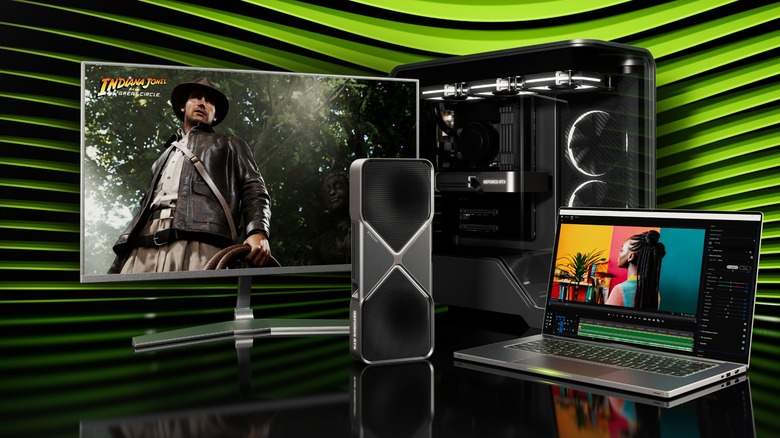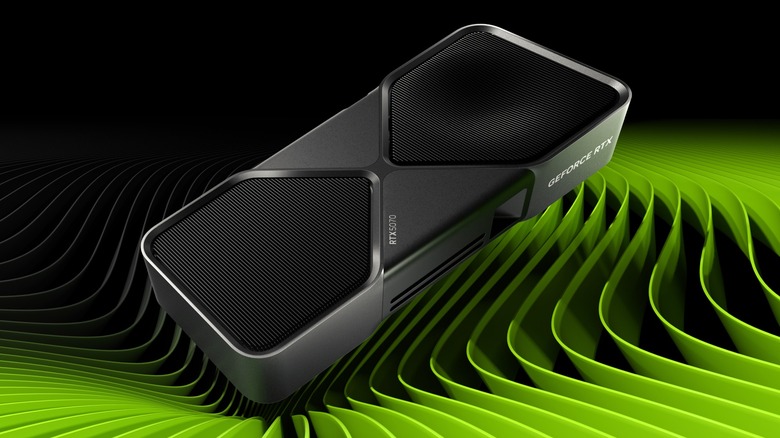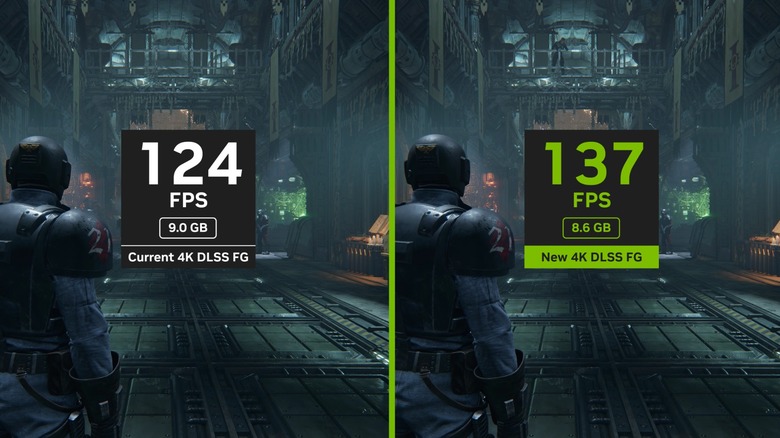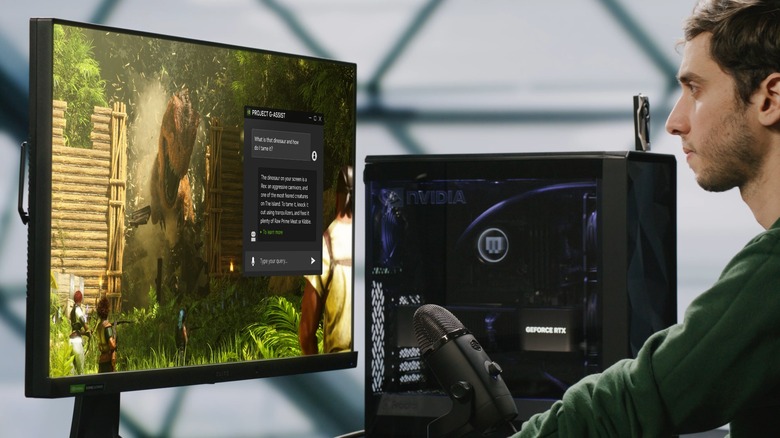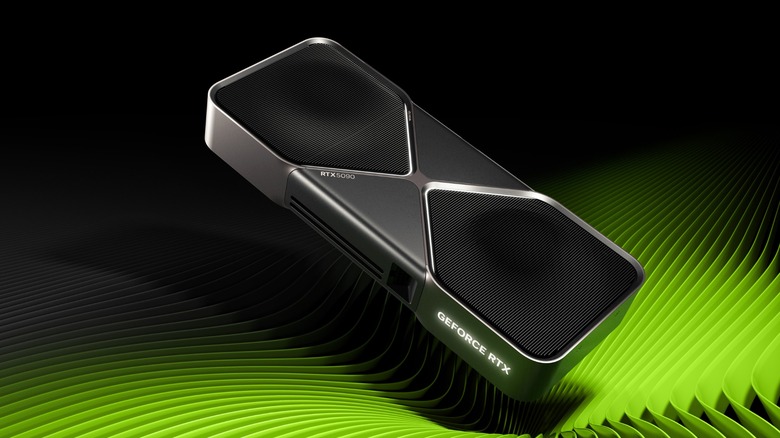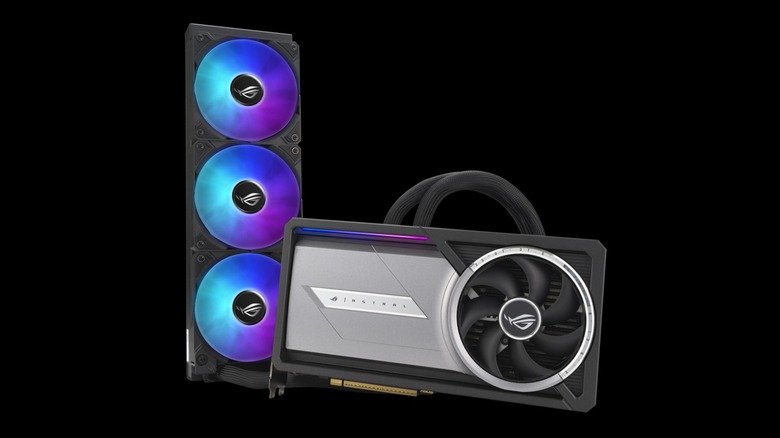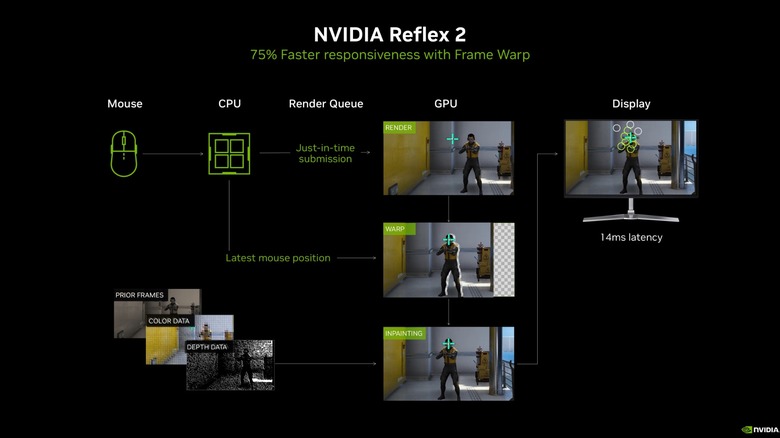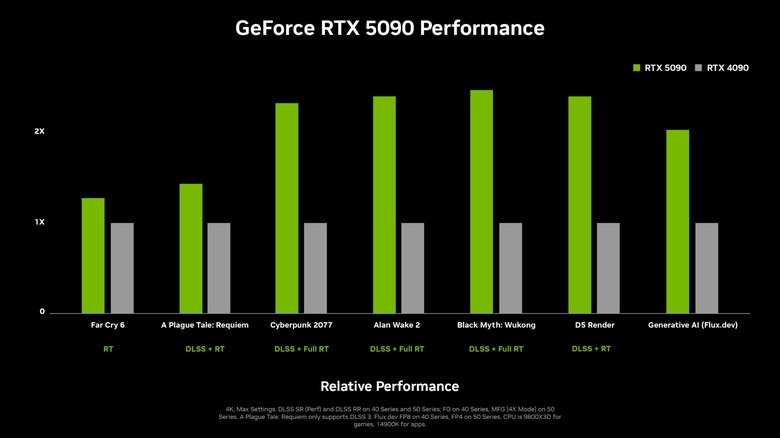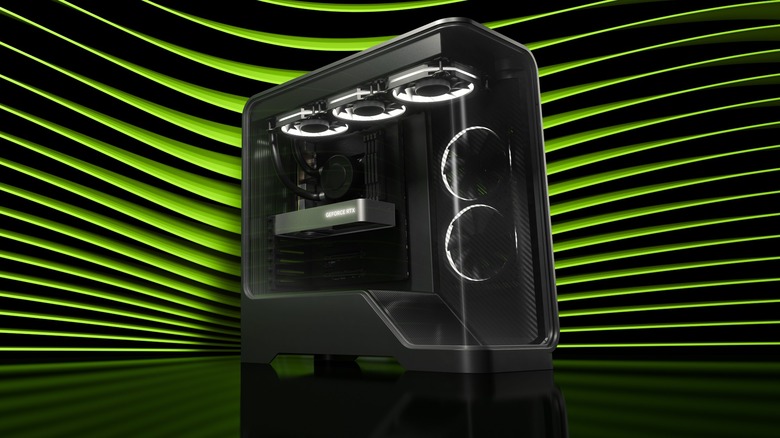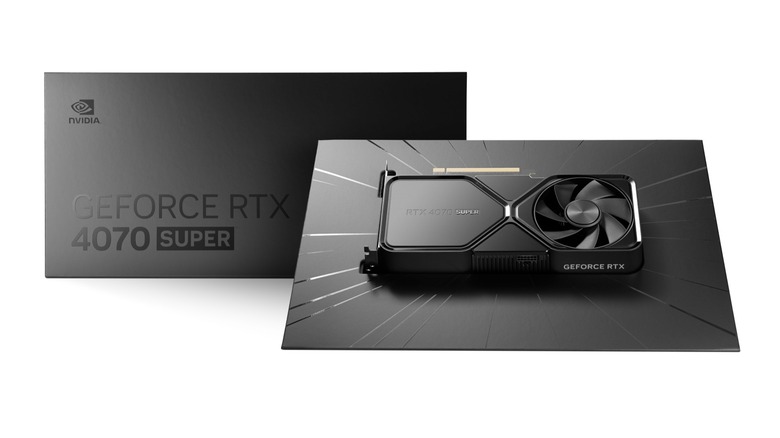5 Pros & 5 Cons Of Upgrading To Nvidia's New RTX 50 Series Graphics Cards
At CES 2025, Nvidia announced its new GeForce RTX 50 series graphics cards. These cards are touted as extremely capable and insanely powerful, able to stand up to the demands of both gamers and enterprise users. Thanks to a new set of features, these GPUs can also be attractive to those who already own a high-end RTX card for themselves. However, outside of waiting for benchmarks and taking advantage of anticipated deals, there are a few other factors to consider before deciding whether it's worth upgrading to the new RTX 50 series.
You can always look for signs that it might be time to upgrade to an Nvidia RTX graphics card. You're unlikely to find most 40 series GPUs at a reasonable price today, but if you already have one for yourself, the question of whether to upgrade becomes more difficult to answer. As of this article's publication, the new cards have yet to be released, which means you'll have to wait and see if their real-world performance is as impressive as the company claims it to be. Even so, there are some easily measurable aspects of the 50 series to compare them to older generations, so it's not impossible to plan things out before they're available to the public.
Pro: Cheaper 5070 Cards
Of the upcoming 50 series cards, the 5070 and 5070 Ti might be the most valuable — at least when compared to the previous generation. The original RTX 4070 was a $599 1440p workhorse, but the new 5070 has higher specs all around on top of its MSRP being $50 cheaper. Later, the 4070 Super came out at the same price as its new 50 series upgrade, but even it can't compete with the latest generation. The only comparable trait is VRAM at 12 GB for both cards and even then, the 5070 still wins out thanks to faster GDDR7 memory.
The 5070 Ti is similarly cheaper than its 4070 Ti counterpart, but the performance boosts here are even more noticeable. It's better to compare it to the 4070 Ti Super instead, which has 16 GB of VRAM. Yet this is still one-upped by its newer counterpart in the number of cores and memory bandwidth size. While these measurable statistics don't equate to the biggest increases yet, they're still definite increases at a lower price. As long as you don't already have a 4070 card or better, the 5070 and 5070 Ti are worth your consideration.
Pro: Better Gaming Features
In the modern era of gaming, new card features are king. Some upcoming titles mention upscaling and frame generation in their minimum and recommended specs, and certain gamers argue that technologies like DLSS are encouraging developers to prioritize performance boosts over native optimization. Whether you see this as something to applaud or abhor, many modern releases will take full advantage of the new DLSS upgrades offered by the 50 series cards. With this in mind, the performance boosts shown off by Nvidia seem even more appealing in the long run.
The new 50 series cards will be able to use DLSS 4, which uses AI to generate multiple frames at once at a level that couldn't be matched by 40 series alternatives. The technology's new design also allows for higher image quality and less VRAM use, which further improves performance when using additional features like ray tracing. Upgrades to Nvidia's low-latency Reflex technology are also included in 50 series cards, and long-supported features like G-SYNC are still available as they were. One of the biggest benefits of getting Nvidia graphics cards over AMD is the wide range of extra benefits outside of simple performance boosts, and that doesn't seem to be changing with the new generation.
Pro: Greater AI Capabilities
Throughout the reveal of the RTX 50 series, Nvidia put a great deal of focus on its dedication to artificial intelligence. Outside of the aforementioned DLSS features, these new cards have many qualities designed to support AI-driven features like chatbots and image generation. While much of this enhanced support is software-based, it's allowed the newer cards to be up to twice as fast in these sorts of workloads. This is all according to Nvidia itself, so you might have to test that speed on your own, but you can still expect these new cards to improve your workload.
A lot of the improvements to Nvidia's AI architectures also apply to previous RTX cards, but the 50 series will be able to handle them with much greater efficiency. Even when looking at a card like the 5070 Ti, the number of Tensor Cores surpasses those in the RTX 4090. The 5090 takes this even further, providing more than double the cores and pushing its AI capabilities far beyond what previous cards could. If you're all-in on the future of artificial intelligence, these new cards are simply a must-have.
Pro: Wide Range of Manufacturers
As with previous generations, many third-party manufacturers will provide alternative coolers and clock speeds for the new RTX cards. MSI is already planning some high-performance liquid cooling for the upcoming 5090, which might very well surpass the other most expensive MSI gaming products available today. Asus has also started to share its own RTX designs, each with its own special features and massive coolers. At least 11 different manufacturers are releasing their own officially backed RTX 50 series variants, which should allow for plenty of options in the long run.
Of course, many of these cards will vary in price depending on their cooling solutions or increased clock speeds, just like with previous graphics card generations. You should also look out for the major graphics card brands ranked worst to best since it might help you avoid trouble if your third-party card happens to be defective or underpowered. The upcoming releases might affect how people rank these brands in the future, but if any one of them is suffering from major quality control issues, you'll only truly know after their 50 series offerings have been released.
Pro: Best Performance Yet
While AMD and Intel have made their own strides with new graphics cards, these are only really considered to be mid-range at best. Ever since its release, the RTX 4090 has been the strongest graphics card you could get, and it seems like the trend will continue with the 5090. As with the 4070 to 5070, going from a 4090 to a 5090 is going to be nothing more than a straight upgrade in terms of cores, features, VRAM, and every other measurable statistic. Unless a hypothetical 5090 Ti is released sometime in the future, the 5090 will be the most powerful graphics card you can get for the next few years.
When comparing the 5070, 5080, and 5090 in price and performance, it might be difficult to find the greatest amount of value from the top end. After all, the 5090 is actually more expensive than its previous generation counterpart at $2,000 compared to $1,600, while the 5080 shares the 4080's MSRP of $1,000. If price is no concern, though, the 5090 is unquestionably the best-performing card you can expect from any store across the next year or so.
Con: More Expensive Than They Might Seem
Depending on how lucky you are over the next year, actually finding these new cards at their MSRP might be an impossible task. Back in 2021, RTX 30 Series scalpers were making bank while customers waited for restocks, and the possibility of newer GPUs falling into the hands of these people is all too possible. Third-party cards will also carry obvious price increases due to their more advanced cooling solutions, which could bump up the price as much as a few hundred dollars in certain cases. The performance increases might not change much, but cooling and sound improvements might be worth a few extra dollars.
For those in the U.S., politics might even play a big factor in how much you end up spending. Thanks to the recent election, tariffs are expected to affect the prices of multiple electronics — including components made by Nvidia and its rivals. Depending on how immediately these tariffs come into effect, the RTX 5070 (non-Ti) could end up being the only new card under $1,000. Time will only tell if you should worry about this sooner rather than later, but it's something to be wary of if you're already on a restrictive budget.
Con: Few New Features Not Involving AI
Unless you're going all-in on the AI craze, most of the new features from the RTX 50 series will be useless to you. Outside of basic speed increases and a boost in traditional rendering (rasterization) performance, the only technology that isn't built entirely around AI is Nvidia Reflex 2. As the name implies, this is a new iteration of something that already existed on previous GeForce cards, designed to lower latency in games. But this isn't even exclusive to the 50 series, as it's planned to be added to older RTX GPUs in a future update.
While AI-focused features don't always focus solely on image generation or language models, they can end up being imperfect in other areas. DLSS 4, for example, uses AI to generate frames and enhance performance in games — but comparisons between native resolution and older DLSS technologies reveal that the trade-off leads to muddier visuals and faraway imperfections in certain titles. Unfortunately, those who focus solely on performance without any AI enhancements might find themselves with less improvements than they expected.
Con: Questionable Native Performance Increases
While we don't have exact numbers on how the new 50 series cards will perform in games, there are a few graphs by Nvidia showcasing performance increases in certain games. However, most of these graphs focus on performance with DLSS, with the only exception being how well Far Cry 6 runs while using ray tracing. This is the only official measurement we have of the 50 series performance without DLSS, and the results are far from impressive. Barely any of the cards show more than a 1.5x increase, with the heavy focus on upscaling calling into question how well they can actually perform without any fancy tricks.
In Nvidia's showcase of these cards, it was mentioned that the 5070 could surpass the 4090's performance. However, this was only found to be true when using the new DLSS 4 technology, with native performance hardly even being mentioned. There will likely be very little word on how the cards compare without DLSS, which can be especially troublesome if a new game doesn't support it at all. Considering the 5070's lack of CUDA cores, which are critical for parallel processing performance in Nvidia cards, you should probably take those claims of beating the 4090 with a grain of salt.
Con: More Required Power
While it might not come as much of a surprise, the new RTX 50 series cards will require more power to run. This means you'll need a higher-wattage power supply to handle them, especially with the new 5090 taking up a total of 575 watts. For comparison, the 4090 only took up 450 watts, which means a baseline power supply for that isn't even enough for the best of the new generation. The lesser GPUs don't have nearly as much of an increase in comparison, but they could still force you to reconsider your PC build outright if you're not prepared.
The connectors could also cause some trouble if you've had issues with cable management in the past. The 5090 requires four 8-pin cables as opposed to the 4090's three, which means more space will be taken up in the long run. It might not be a bad idea to take a look at major power supply brands ranked worst to best so you can get a PSU capable of handling the immense power draw of these cards. Otherwise, you might risk damaging these expensive components or even the rest of your PC.
Con: More Valuable Cards Might Come Later
So far, the RTX 50 series include four graphics cards. However, with Nvidia's history, as well as rumors and leaks, many prospective buyers already expect a later release of a supposed RTX 5060 card in the future. While the final status of this sort of card is speculative, its existence is a well-educated guess to make, and it would be surprising if it never appeared in the future. In other words, an entry-level 50 series GPU — priced at under $500 — is something you can probably wait for if you need to.
Additionally, Nvidia has been making more efforts to release "Super" variants of graphics cards. While the 30 series missed out on these versions, the 40, 20, and even 16 series cards all have Super versions with minimal price increases and measurable performance boosts. Eventually, we might see an RTX 5070 Super with greater VRAM and similar performance to its Ti counterpart. You probably shouldn't base your entire purchasing decision on these speculative models, but if you can only get these GPUs months down the line, you might have access to some additional options.
